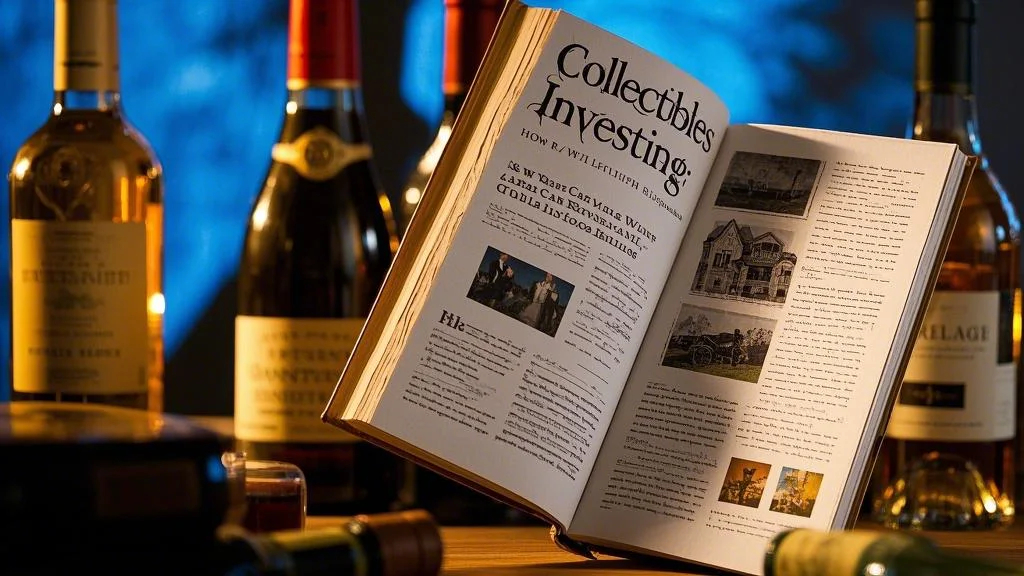Why Collectibles Investing is Gaining Popularity Among Wealthy Investors
In the world of wealth management, collectibles investing has emerged as a unique and increasingly popular strategy for building and preserving wealth. Unlike traditional investments like stocks or bonds, collectibles such as rare art, fine wine, and other rare assets offer a tangible and often emotionally satisfying way to diversify a portfolio. For high-net-worth individuals, these alternative investments provide not only the potential for significant financial returns but also a sense of cultural and historical connection. As global markets become more volatile, the appeal of collectibles as a means of capital preservation continues to grow.
One of the key reasons wealthy investors are drawn to collectibles investing is the potential for appreciation over time. Rare art, for example, has historically outperformed many traditional asset classes, with works by renowned artists like Picasso and Basquiat fetching record-breaking prices at auctions. Similarly, fine wine from prestigious vineyards has shown consistent growth in value, particularly as demand from emerging markets increases. These rare assets are often seen as a hedge against inflation and economic uncertainty, making them an attractive option for those looking to protect their wealth in turbulent times.
The Role of Art Investment in Wealth Building
When it comes to collectibles investing, few assets capture the imagination quite like rare art. Art investment has long been a favorite among wealthy individuals, not only for its potential financial returns but also for its cultural and aesthetic value. Unlike stocks or bonds, which can feel abstract and impersonal, art offers a tangible connection to history, creativity, and human expression. For many high-net-worth investors, building an art collection is as much about passion as it is about profit.

However, investing in art is not without its challenges. The art market can be opaque, with prices often influenced by factors such as provenance, condition, and the reputation of the artist. For this reason, many investors turn to experts or advisors to help them navigate the complexities of art investment. Additionally, the illiquid nature of art means that it may take time to find the right buyer when it comes time to sell. Despite these challenges, the potential for significant returns and the intrinsic value of owning a piece of history make art a compelling option for those looking to diversify their portfolios with alternative investments.
Fine Wine as a Stable and Rewarding Investment
Another cornerstone of collectibles investing is fine wine. Over the past few decades, wine has established itself as a stable and rewarding asset class, particularly for those focused on capital preservation. Unlike many other investments, fine wine tends to appreciate steadily over time, driven by factors such as limited supply, increasing demand, and the aging process, which enhances the quality and value of the wine. For wealthy investors, building a wine collection is not only a way to diversify their portfolios but also an opportunity to enjoy the fruits of their investment.
One of the advantages of investing in fine wine is its relatively low correlation with traditional financial markets. This makes it an excellent option for those looking to reduce risk and achieve risk-adjusted returns. Additionally, the global nature of the wine market means that it is less susceptible to local economic downturns. However, like art, investing in wine requires a deep understanding of the market, including factors such as vintage, region, and producer. For this reason, many investors choose to work with specialized wine investment firms or advisors to ensure they are making informed decisions.
The Importance of Capital Preservation in Collectibles Investing
For many wealthy investors, the primary goal of collectibles investing is not just growth but also capital preservation. In an era of low interest rates and volatile markets, tangible assets like rare art and fine wine offer a way to protect wealth while still enjoying the potential for appreciation. Unlike cash, which can lose value due to inflation, or stocks, which can be subject to market crashes, collectibles tend to hold their value over time, making them a reliable store of wealth.
Moreover, collectibles often have a unique emotional and cultural value that goes beyond their financial worth. For example, owning a piece of rare art or a bottle of vintage wine can provide a sense of pride and accomplishment that is difficult to quantify. This emotional connection can make collectibles particularly appealing to high-net-worth investors, who often view their investments as an extension of their personal identity and legacy. As a result, collectibles are not just a financial asset but also a way to preserve and pass on cultural heritage.
Why Collectibles Are a Smart Alternative Investment
In today’s complex financial landscape, alternative investments like collectibles are becoming an increasingly important part of a well-rounded portfolio. Unlike traditional assets, which are often subject to market volatility and economic cycles, collectibles offer a level of stability and predictability that can be hard to find elsewhere. Whether it’s rare art, fine wine, or other rare assets, these investments provide a way to diversify risk and achieve long-term financial goals.
For wealthy investors, the appeal of collectibles investing lies in its unique combination of financial and emotional rewards. Not only do collectibles offer the potential for significant returns, but they also provide a tangible connection to history, culture, and personal passion. As the world becomes increasingly uncertain, the role of collectibles as a means of capital preservation and wealth building is likely to continue growing. By carefully selecting and managing their collections, investors can enjoy both the financial and personal benefits of this timeless investment strategy.
